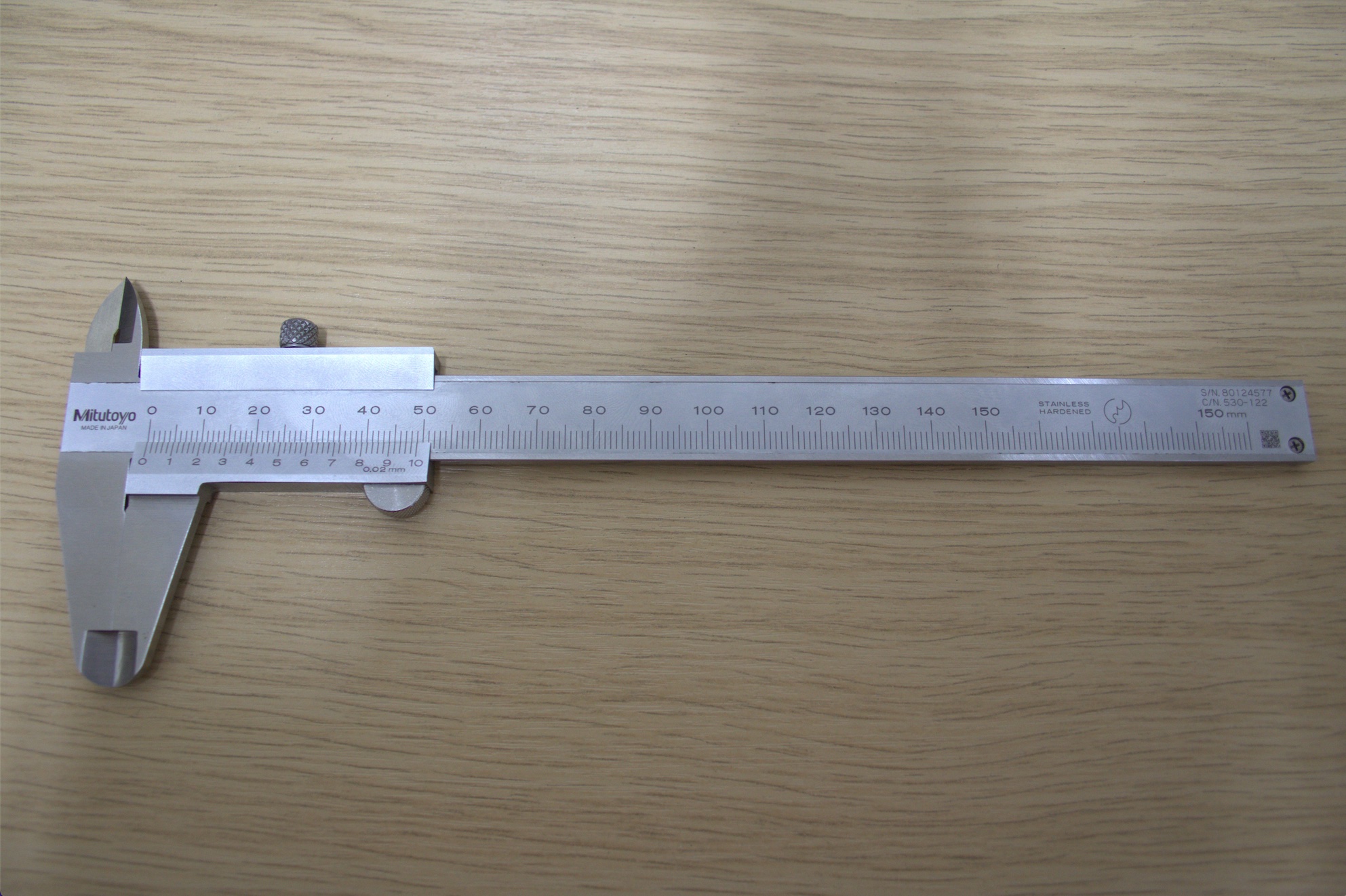Callipers
A calliper (American spelling: caliper) is a measuring instrument used to measure the distance between two opposing sides of an object between two 'legs'. An example of a Vernier calliper is shown in figure 1.


Fig 1: Labelled diagram of Callipers
In figure 1:
- The outside jaws, used to measure the width of an object.
- The inner jaws, used to measure the separation between two points or often the internal diameter of an object
- The fine 0.1mm dial showing the current separation between the more coarse 10mm increment scale
- Coarse 10mm scale
- Adjustment wheel, which adjusts the opening of the callipers
- The depth probe, not callipers at all which is used to measure the depth of a container or hole
The technique used to obtain the measurement varies but the forms you are likely to encounter in a physics laboratory:
- Dial callipers, as shown in figure 1, which reads the final fraction of a millimeter on a simple dial.
- Vernier callipers, which use a Vernier scale to give a direct reading with a high degree of accuracy.
- Digital callipers which replace the dial on dial callipers with an electronic display which outputs the reading directly, as shown in figure 2



/prod01/prodbucket01/media/durham-university/departments-/physics/teaching-labs/VT2A9034-1998X733.jpeg)